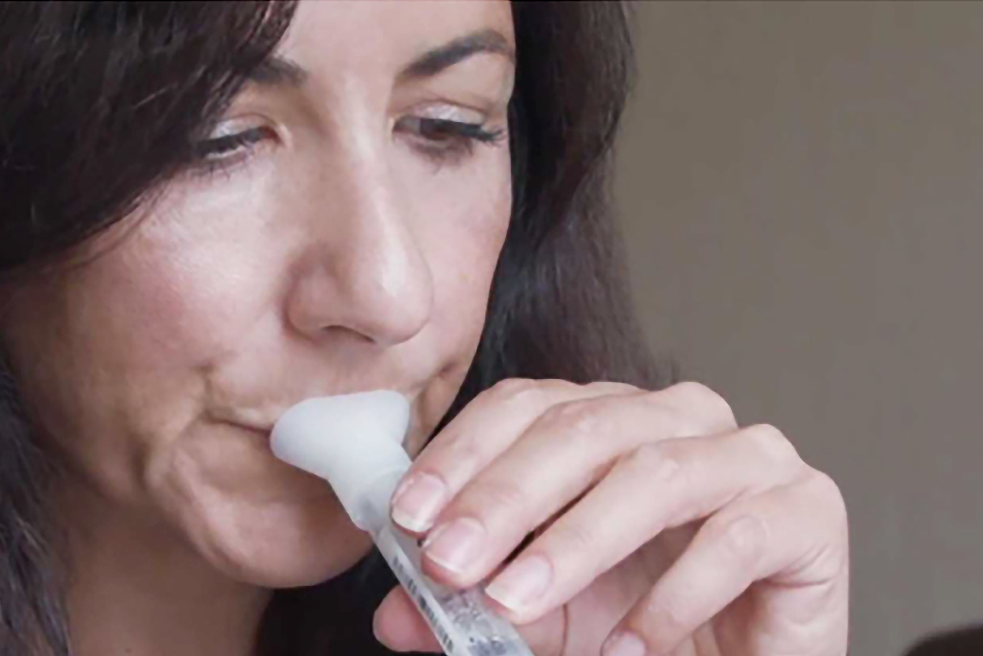Groundbreaking saliva test revolutionizes breast cancer screening, study finds
Breast cancer, the most common cancer worldwide, saw over 2.3 million new cases and caused about 685,000 deaths in 2020.

Breast cancer, the most common cancer worldwide, saw over 2.3 million new cases and caused about 685,000 deaths in 2020. (CREDIT: Creative Commons)
Breast cancer, the most common cancer worldwide, saw over 2.3 million new cases and caused about 685,000 deaths in 2020.
In the U.S. alone, approximately 287,850 new cases of invasive breast cancer and 51,400 cases of ductal carcinoma in situ (DCIS) were diagnosed among women in 2022, leading to 43,250 female deaths from the disease.
The future impact of breast cancer is expected to rise, with projected figures estimating over 3 million new cases and approximately 1 million deaths in 2040.
Imaging techniques like mammography, ultrasound, and magnetic resonance imaging (MRI), along with biopsies, are standard for diagnosing breast cancer. However, these methods have drawbacks such as high cost, limited accessibility, and inaccuracies in detecting early-stage cancer in young women with denser breast tissue.
Related Stories:
Additionally, they can be invasive and expose patients to low-dose radiation, which may be harmful, especially for those sensitive to radiation. Specialized equipment and support from technologists and radiologists are also needed.
To tackle this growing health issue, scientists have developed a saliva test for breast cancer screening, showing promising results in experimental testing, as per a study in the Journal of Vacuum Science & Technology B.
The new hand-held device, developed by researchers from the University of Florida and National Yang Ming Chiao Tung University in Taiwan, detects breast cancer biomarkers from a small saliva sample.


Schematic of the test strips with cover (left) and without cover (right). Printed circuit board to generate digital reading. (CREDIT: Journal of Vacuum Science & Technology B)
Currently, ELISA tests look for HER2 and/or CA15-3 in the blood and are really important markers used to figure out if someone has breast cancer, to choose the best treatment, and to see if the treatment is working.
HER2 is a protein that helps cells grow and divide normally, but in about 15% to 20% of breast cancer cases, there's too much HER2 because of a gene problem. This can make the cancer grow faster, come back more often, and make the outlook not as good.
Output drain voltage waveform for pure artificial saliva and HER2 protein diluted in saliva from 10−7 to 10−15 g/ml. (b) Output digital reading from PCB under different HER2 protein concentrations. The limit of detection is 10−15 g/ml while the sensitivity is 70/dec. The LOD of ELISA data is taken from Ref. 15. (CREDIT: Journal of Vacuum Science & Technology B)
CA15-3 is a substance that's linked to tumors and can be found in the blood of some breast cancer patients. If CA15-3 levels are high, it might mean there are cancer cells around.
The levels of HER2 and CA15-3 in saliva match up with their levels in blood, so researchers believe that saliva tests could also help spot breast cancer.
Output digital reading result from the human sample test with strips functionalized by HER2 antibody. The orange star stands for HER2-negative cases, which are all the stars except for the lowest reading one. The purple star indicates the HER2-positive case, it shows the lowest reading as the HER2 concentration is way higher than other cases. (CREDIT: Journal of Vacuum Science & Technology B)
"Imagine medical staff conducting breast cancer screening in communities or hospitals," said Hsiao-Hsuan Wan, a UF doctoral student in Chemical Engineering and the study’s lead author. "Our device is an excellent choice because it is portable — about the size of your hand — and reusable. The testing time is under five seconds per sample, which makes it highly efficient."
The device functions by placing a saliva sample on a test strip treated with specific antibodies that respond to cancer biomarkers. Electrical impulses are then sent to contact points on the biosensor device, with signals measured and translated into digital information about the biomarker concentration. The results are quick and easy to interpret, Wan noted.
Output digital reading result from the human sample test with strips functionalized by CA15-3 antibody. (CREDIT: Journal of Vacuum Science & Technology B)
During testing, the device accurately differentiated between healthy breast tissue, early breast cancer, and advanced breast cancer in a small group of 21 women. Its biosensor design utilizes common components like glucose testing strips and the open-source hardware-software platform Arduino.
Risk factors for developing breast cancer
According to the Mayo Clinic, factors that may increase the risk of breast cancer include:
A family history of breast cancer. If a parent, sibling or child had breast cancer, your risk of breast cancer is increased. The risk is higher if your family has a history of getting breast cancer at a young age. The risk also is higher if you have multiple family members with breast cancer. Still, most people diagnosed with breast cancer don't have a family history of the disease.
A personal history of breast cancer. If you've had cancer in one breast, you have an increased risk of getting cancer in the other breast.
A personal history of breast conditions. Certain breast conditions are markers for a higher risk of breast cancer. These conditions include lobular carcinoma in situ, also called LCIS, and atypical hyperplasia of the breast. If you've had a breast biopsy that found one of these conditions, you have an increased risk of breast cancer.
Beginning your period at a younger age. Beginning your period before age 12 increases your risk of breast cancer.
Beginning menopause at an older age. Beginning menopause after age 55 increases the risk of breast cancer.
Being female. Women are much more likely than men are to get breast cancer. Everyone is born with some breast tissue, so anyone can get breast cancer.
Dense breast tissue. Breast tissue is made up of fatty tissue and dense tissue. Dense tissue is made of milk glands, milk ducts and fibrous tissue. If you have dense breasts, you have more dense tissue than fatty tissue in your breasts. Having dense breasts can make it harder to detect breast cancer on a mammogram. If a mammogram showed that you have dense breasts, your risk of breast cancer is increased. Talk with your healthcare team about other tests you might have in addition to mammograms to look for breast cancer.
Drinking alcohol. Drinking alcohol increases the risk of breast cancer.
Having your first child at an older age. Giving birth to your first child after age 30 may increase the risk of breast cancer.
Having never been pregnant. Having been pregnant one or more times lowers the risk of breast cancer. Never having been pregnant increases the risk.
Increasing age. The risk of breast cancer goes up as you get older.
Inherited DNA changes that increase cancer risk. Certain DNA changes that increase the risk of breast cancer can be passed from parents to children. The most well-known changes are called BRCA1 and BRCA2. These changes can greatly increase your risk of breast cancer and other cancers, but not everyone with these DNA changes gets cancer.
Menopausal hormone therapy. Taking certain hormone therapy medicines to control the symptoms of menopause may increase the risk of breast cancer. The risk is linked to hormone therapy medicines that combine estrogen and progesterone. The risk goes down when you stop taking these medicines.
Obesity. People with obesity have an increased risk of breast cancer.
Radiation exposure. If you received radiation treatments to your chest as a child or young adult, your risk of breast cancer is higher.
For more science and technology stories check out our New Discoveries section at The Brighter Side of News.
Note: Materials provided above by the The Brighter Side of News. Content may be edited for style and length.
Like these kind of feel good stories? Get the Brighter Side of News' newsletter.



